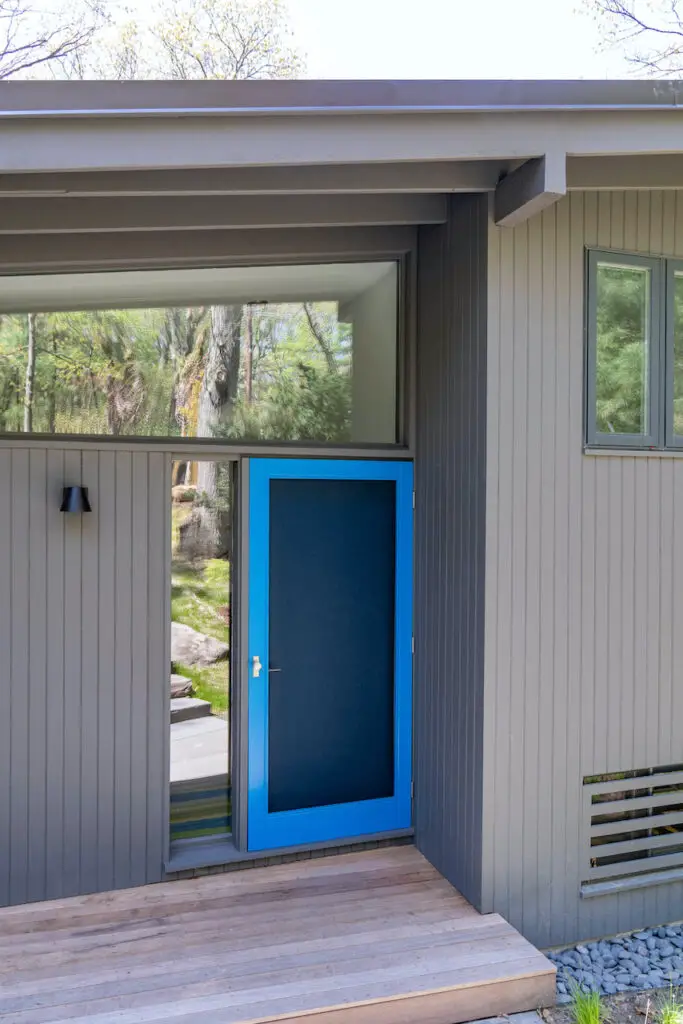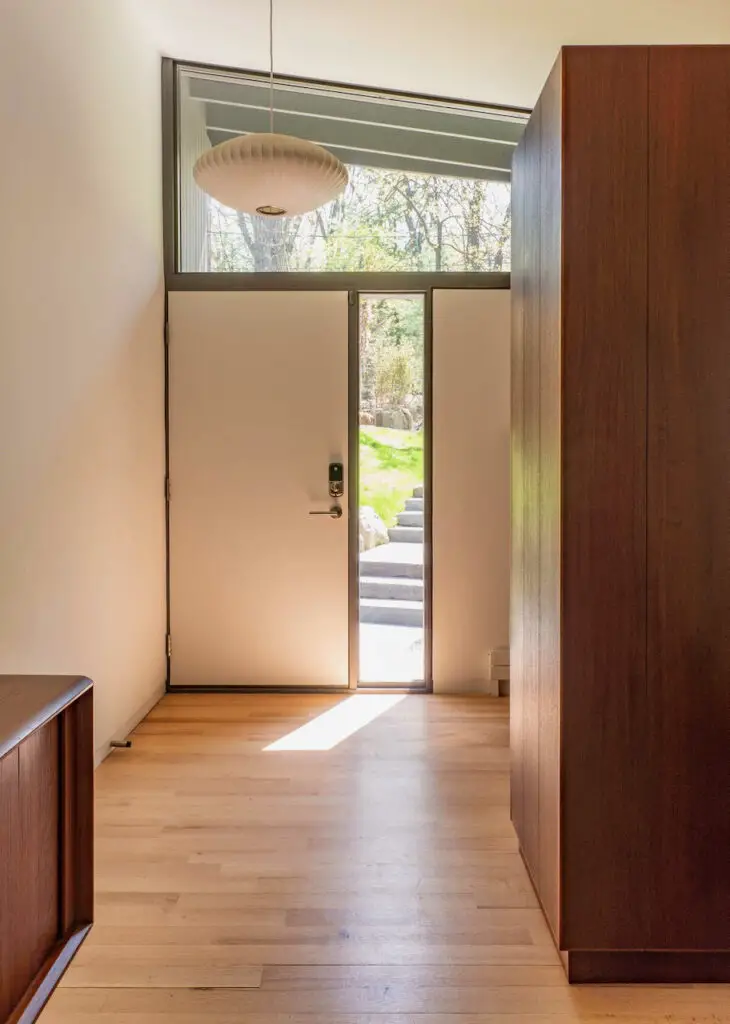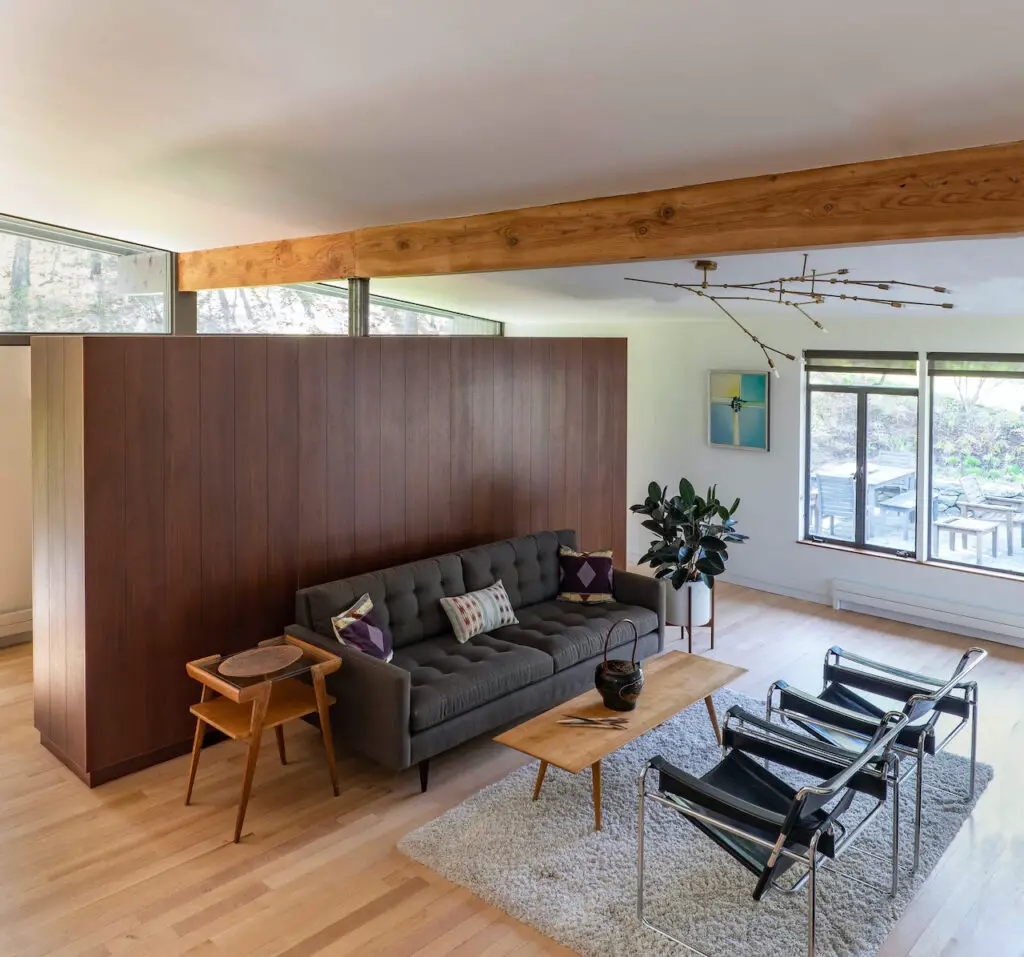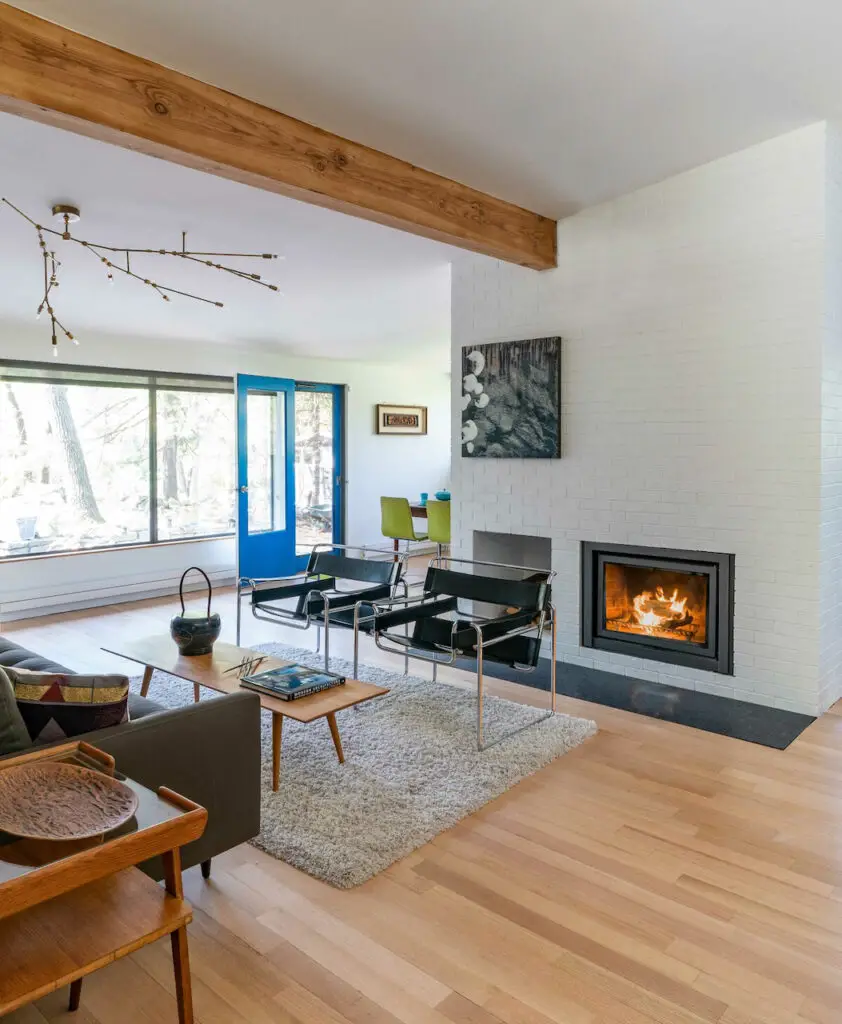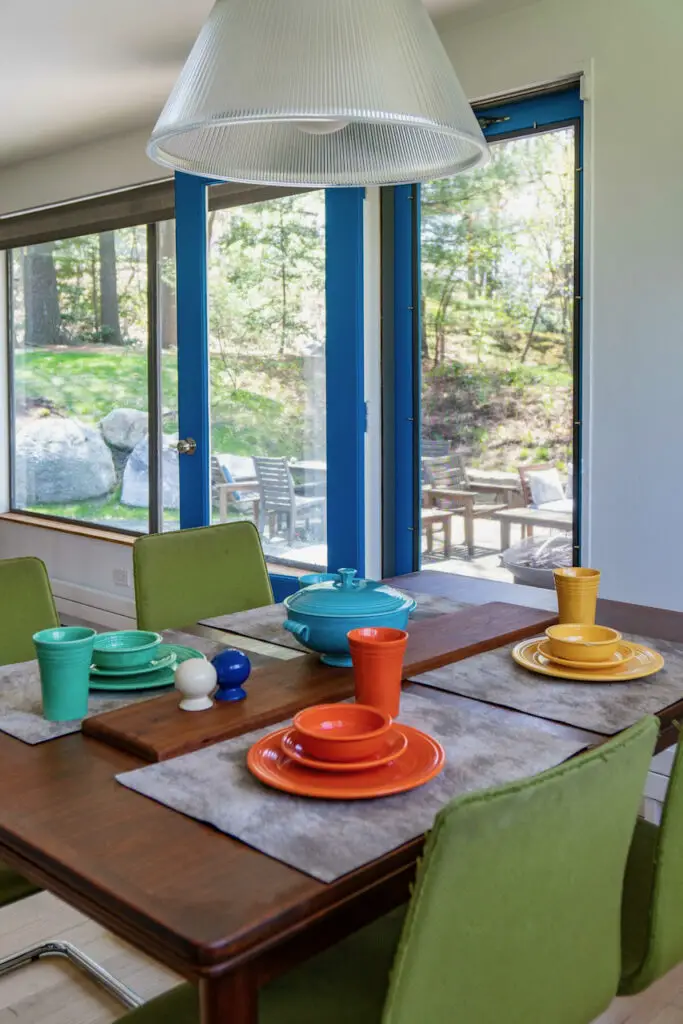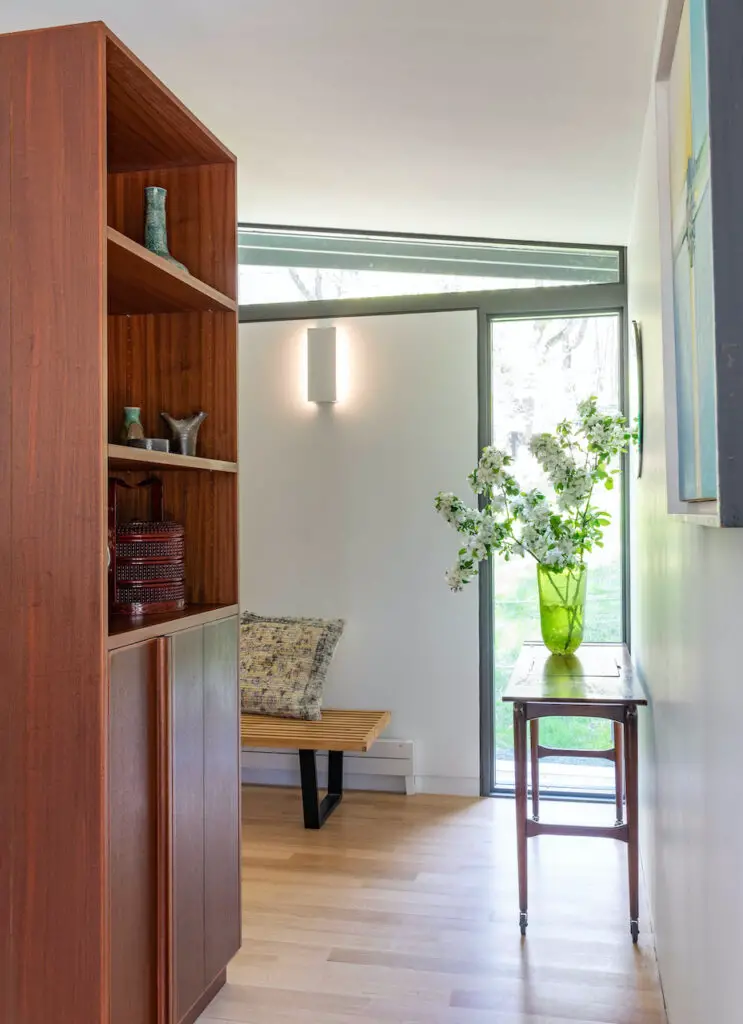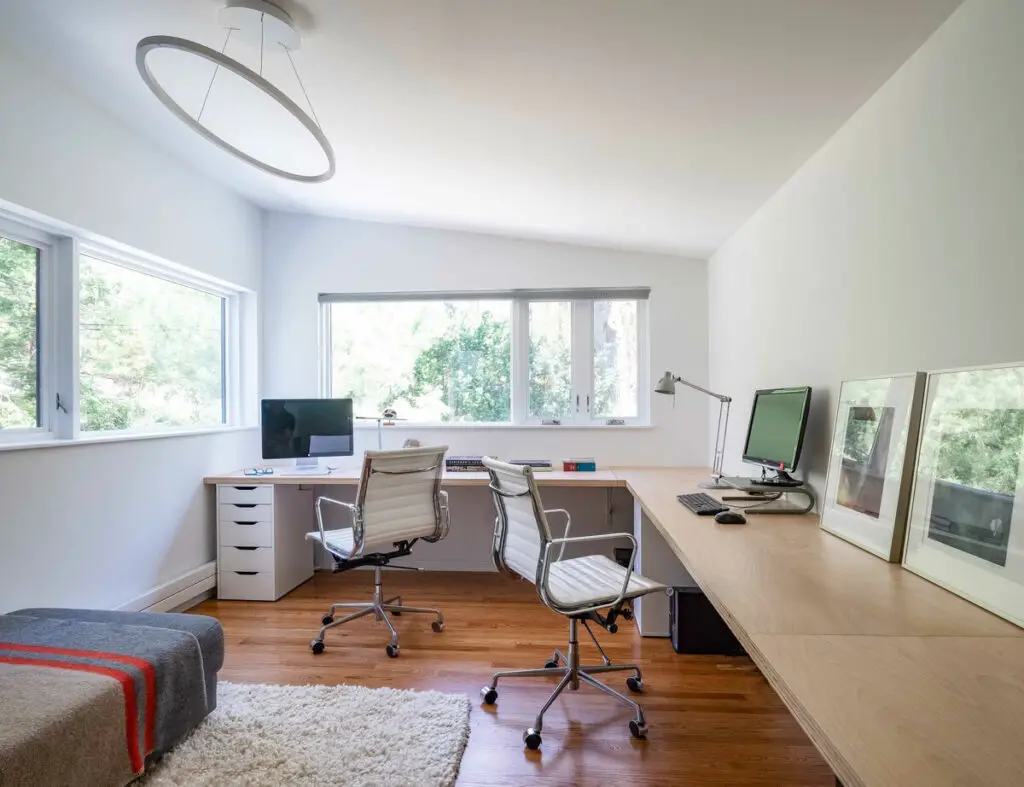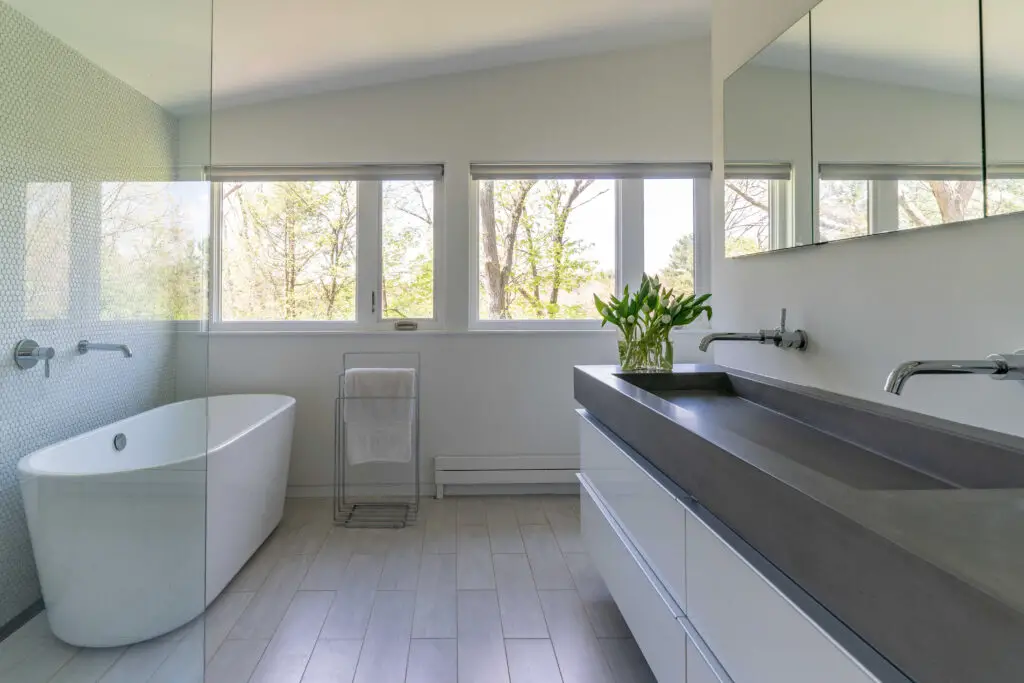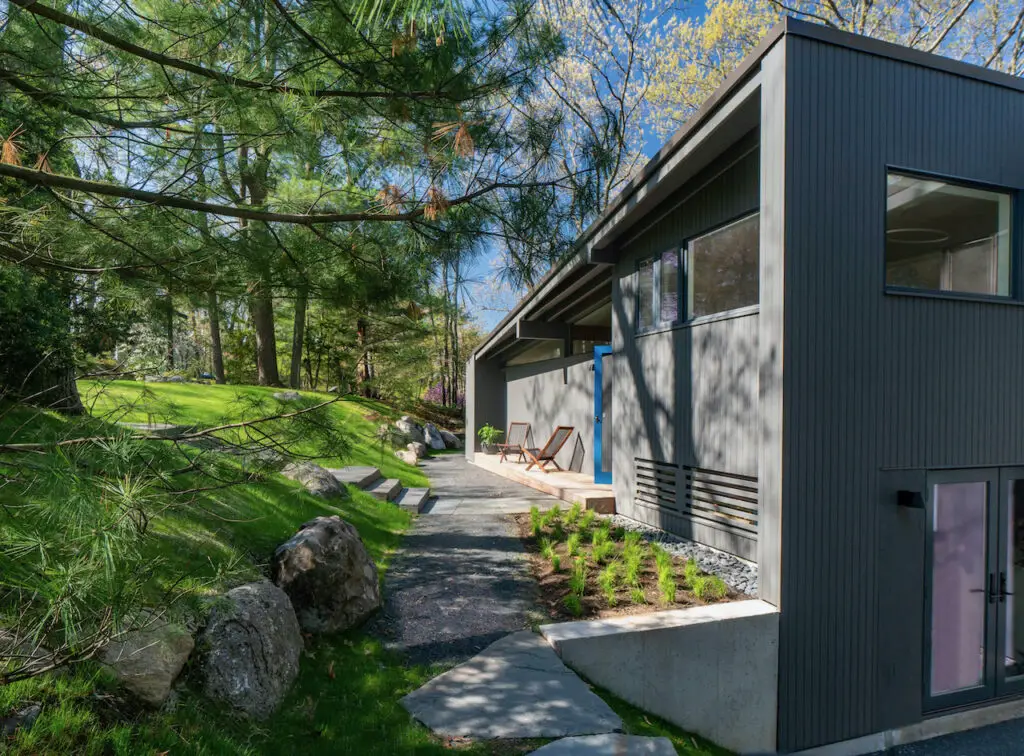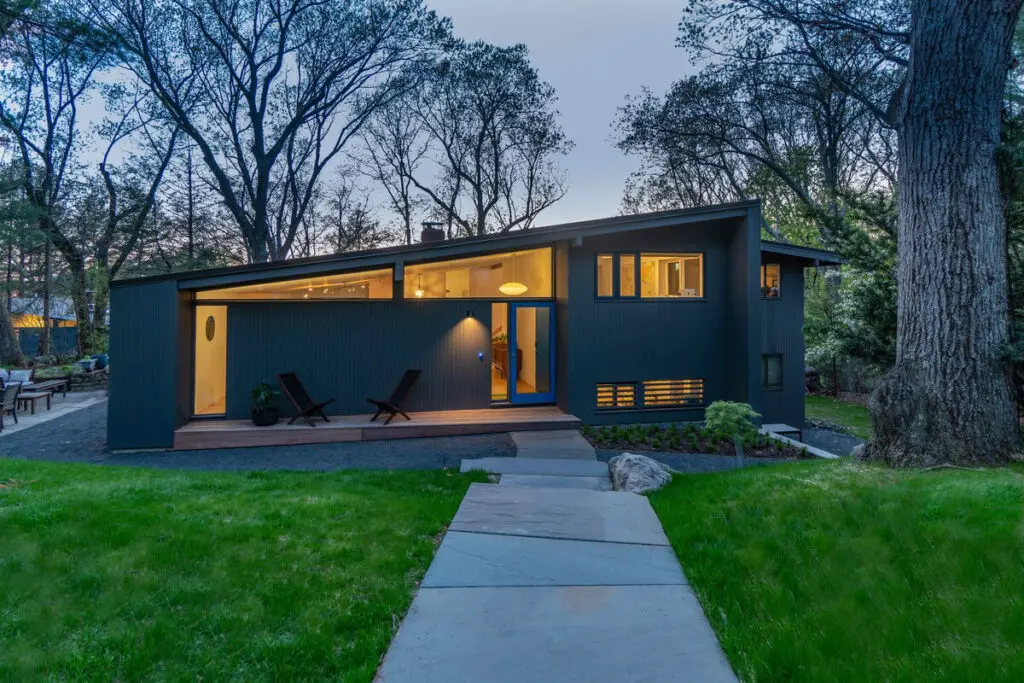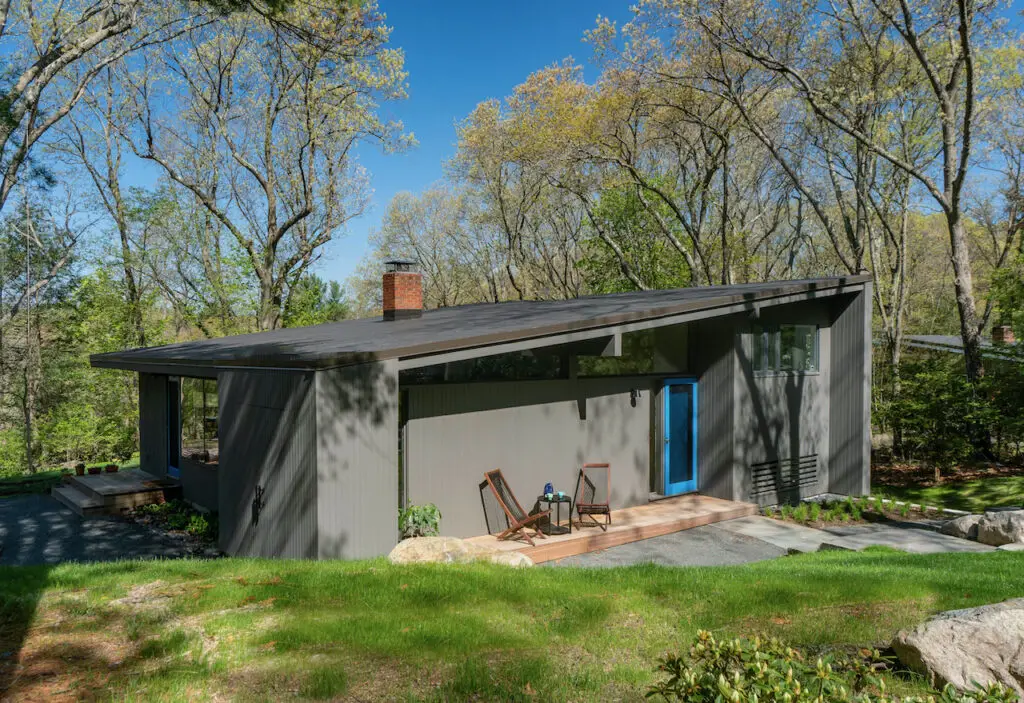
This home was designed in the mid 1950’s by Walter Pierce as part of the Peacock Farm neighborhood in Lexington Massachusetts.
The home was part of a planned midcentury modern neighborhood which included eighty homes, built en masse to control costs and attract young families as part of the post-war housing and population boom.
Unlike many homes in the tract, this home was completely untouched.
Despite its pristine condition, it was lacking in storage, with a cramped entrance and no space for a comfortable home office.
Hisel Flynn Architects were brought in to undertake an addition to the home, all while staying true to the original vision.
Clerestory trapezoid windows, simple and exposed structures, and natural materials were all used in order to preserve the spirit of the home from its beginnings.
The addition added a large entry foyer with a custom storage wardrobe (combining closet space, overflow kitchen storage, and a bar), an upstairs home office, and a lower level workshop.
The existing upstairs bathroom was completely renovated and another piece of custom cabinetry was designed for the Master Bedroom to supplement its small closet.
We chatted with Katie Flynn, from Hisel Flynn Architects, to find out more.
What do you think was so special about this period in American design?
Here in greater Boston midcentury modern homes were built for individual clients but ALSO built as planned communities. This home is part of the Peacock Farm community in Lexington.
These communities are special because they illustrate the architects’ sincerity and deep belief that architecture should be a moral endeavor and form and reform ways of living for the better.
This particular community is still cohesive today, and shows how far-reaching midcentury modern architects were in their vision not only for architecture but for the people who would enjoy it for decades to come.
What were the challenges for this project?
A couple of challenges.
1. We wanted to stay true to the original midcentury modern vibe – by keeping the overall scale of the intervention small and by adhering to principles of connecting inside and outside, using materials honestly, and expressing structure. So we worked hard to do those things through our design.
2. We wanted to also stay true to the existing assemblies which are slim and lightweight – so we had to do a bunch of technical gymnastics to get the roof strong enough and well insulated enough without it getting chunky – we used direct-set “insulated glass units” for the trapezoids to keep site-lines slim and un-fussy…
What in your opinion are the best features of the home?
I think we succeeded in getting a home that met our objectives of being true to the original mid-century modern period while also updating it for its next 100 years of life!
An unintended excellent feature is the “forced perspective” nature of the front facade – as you can see from the exterior pictures, the roof angles down AND in, so it really amplifies our one formal move of including new spaces under a single existing roofline.
